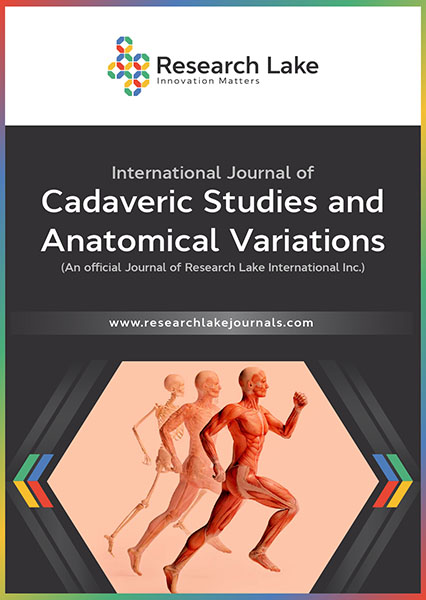Accessory Lateral Head of the Right Gastrocnemius Muscle in a 65 year-old White Male Donor
Abstract
The three muscles that form the calf muscle or triceps surae include the soleus muscle, the gastrocnemius muscle, and the plantaris muscle. Generally, the gastrocnemius muscle consists of a larger medial head and relatively smaller lateral head. It is responsible for plantar flexion of the foot. The lateral head arises from the posterior lateral femoral condyle and the larger medial head originates from the posterior medial femoral condyle. The medial and lateral heads of the gastrocnemius muscle along with the soleus muscle combine to form the Achilles tendon, which inserts onto the posterior surface of the calcaneus. Since the gastrocnemius muscle crosses three joints including the knee and subtalar joints, it can be vulnerable to injury, especially in mature athletes who experience sudden and swift changes in direction associated with muscular overstretching. Other causes of gastrocnemius muscle injury include maximal knee extension and full ankle dorsiflexion. Since the muscle is already prone to injury, anatomical variations of the gastrocnemius muscles may be symptomatic. With muscle variations, there are potential implications and effects on the other structures within the popliteal fossa. Many different anatomical variations have been identified during routine dissections and reported in the literature. Understanding details of these variations is important for diagnostic, surgical and clinical practice and patient management. Here we report on a 65-year-old White Male cadaveric donor with an accessory lateral head of the gastrocnemius muscle found incidentally during a routine dissection.
Copyright (c) 2022 Elizabeth Maynes, Keiko Meshida, Maria Ximena Leighton, Gary Wind, Guinevere Granite

This work is licensed under a Creative Commons Attribution-NonCommercial 4.0 International License.
Copyright © by the authors; licensee Research Lake International Inc., Canada. This article is an open access article distributed under the terms and conditions of the Creative Commons Attribution Non-Commercial License (CC BY-NC) (http://creativecommons.org/licenses/by-nc/4.0/).















